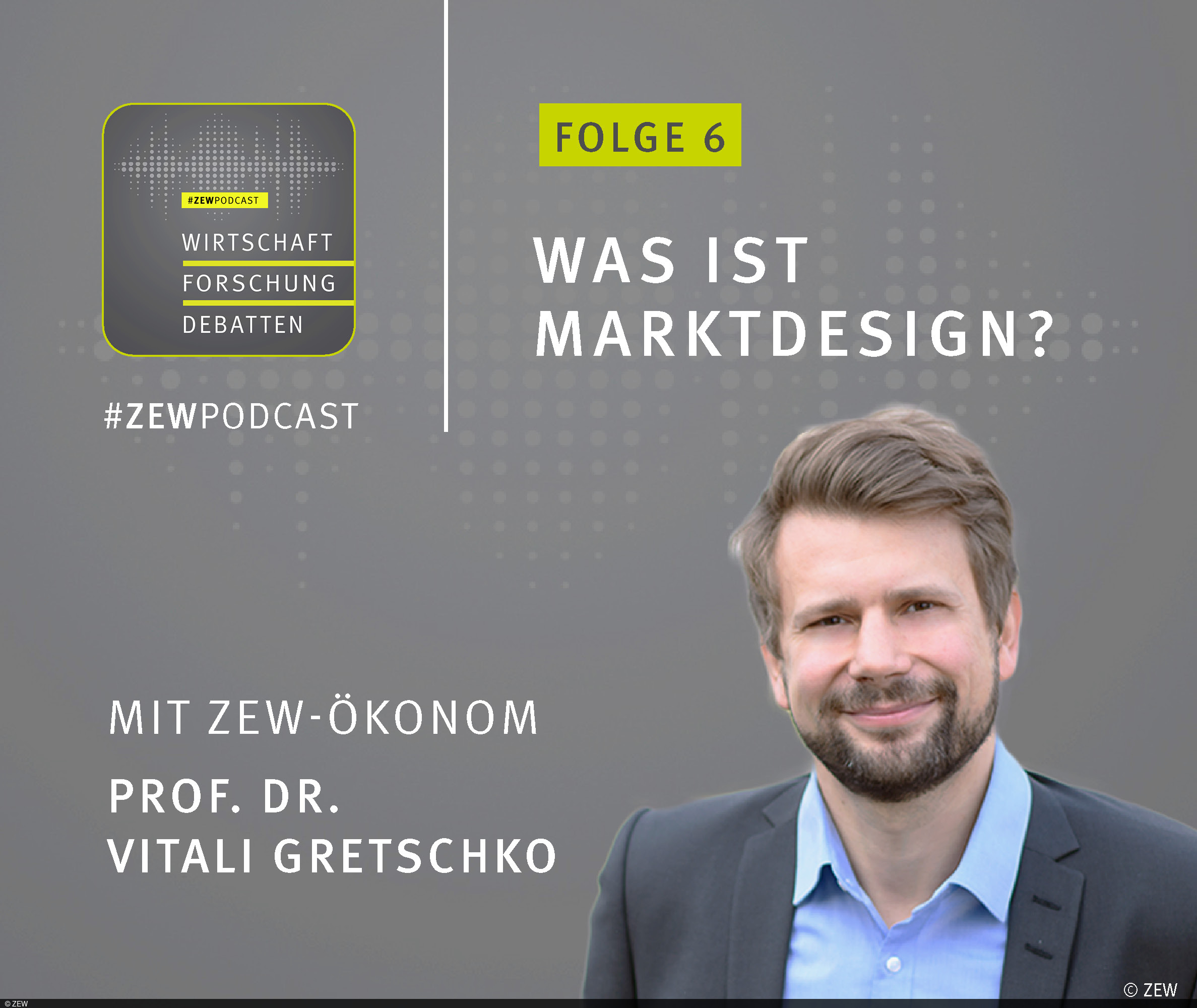Market Design: How to Design an Optimal Market
#ZEWPodcastZEW Economist Vitali Gretschko in the #ZEWPodcast
The allocation of daycare places, mobile phone frequency auctions, or the distribution of donations – markets are diverse and can be improved by an efficient design of their rules. Market design is dedicated to optimising and analysing markets. In the latest episode of the #ZEWPodcast, Professor Vitali Gretschko talks about where this economic discipline can be applied. He explains what markets and market design are all about and in what way market design could help, for example, in dealing with the COVID-19 crisis.
In the #ZEWPodcast “Wirtschaft · Forschung · Debatten”/“Economy · Research · Debates”, the head of the ZEW Research Group “Market Design” explains what market designers do. “We think of the rules and framework conditions that lead to certain markets functioning well. We want to make sure that a scarce good ends up at the place where that good is also most valued,” Vitali Gretschko explains. This means that market designers essentially design rules and institutions that govern an exchange. Market designers do not prove general theorems that apply in all markets, but instead look at a specific market and define the optimal rules for it. They then test these rules and eventually help implement them. “This involves, in particular, also looking at the fine details of the market,” emphasises the ZEW economist.
Market design can also play a significant role in helping to cope with the coronavirus pandemic. “At the beginning of the COVID-19 crisis, there was a shortage of medical supplies because the stockpiles were not prepared for crisis mode,” explains Vitali Gretschko. So how can market design help? In the podcast, the economist discusses a proposal by market designers Axel Ockenfels, Peter Cramton and Robert Wilson. Their idea is to establish a centralised clearing house that collects data on which hospitals have which medical products available. “The clearing house could potentially also purchase medical goods from manufacturers. The question here is: How are the purchased goods distributed among the hospitals based on the information from the clearing house?” The proposed solution is to set up a fictitious market and develop a medical currency, of which each hospital would receive a basic amount. With this medical currency, the hospitals could then buy goods via the central clearing house, says Vitali Gretschko.
The distribution of donations can also be optimised with the help of market design methods. Vitali Gretschko talks about a ZEW project that deals with the distribution of food donations for the food aid association, Tafel Deutschland e. V. “The problem is, the association sometimes receives large donations from companies, which have to be distributed to the individual food banks,” the market designer points out. It would be important to know which food banks need these donations the most and which have the least of a certain good in stock. A system similar to the centralised clearing house for medical goods should be developed for this purpose. Donations could be listed on a platform that is visible to all food banks, enabling an effective distribution of donations. However, not real but fictitious money would be used for this purpose. This money could then be distributed to the food banks according to their specific needs.
